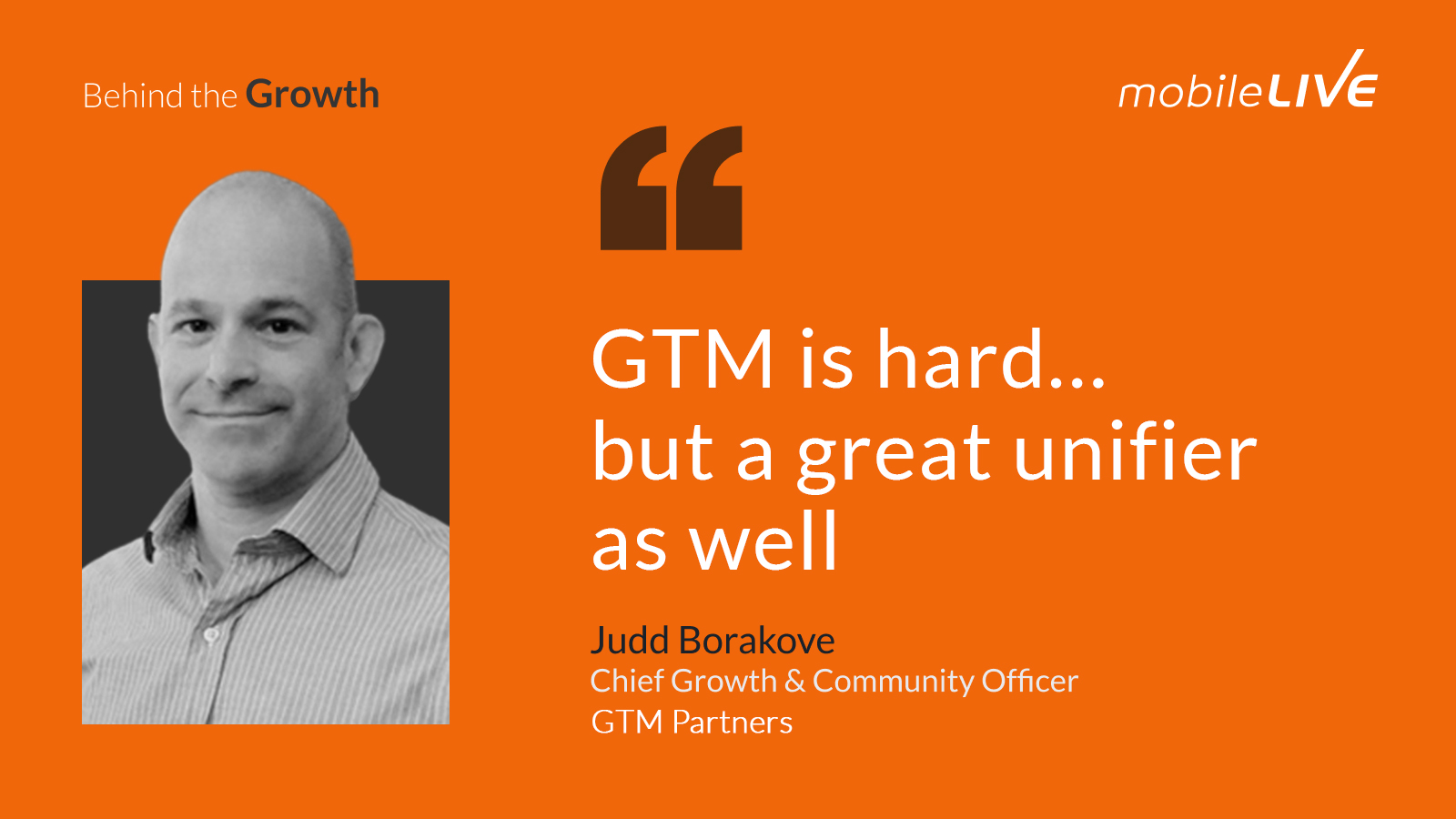Key Insights
What is GTM? It’s the million-dollar question, given that we don’t have an agreed definition. But, according to Judd, “Everything that touches the customer and revenue at any point in the life cycle of your future customers or existing customers is go-to-market. That could be ICP definitions, pricing, packaging, or product sets. That could be your POV or messaging. That could be your sales enablement, things along those lines. That could be your time to value how quickly you implement and get them to see the value they’re expecting. That could be your expansion. […] And then your leadership and management — the thing that glues everything together — those components all make up your go-to-market.”
So, who takes the lead in GTM? Two groups. First, we have teams operating under the GTM umbrella, and then we have an executive who ensures everything goes smoothly. In other words, one side implements it; another owns it. “A lot of people will say, CRO owns it or CMO owns it because the day-to-day operationalization of your go-to-market falls on these people. But from a leadership perspective, the CEO isn’t out there implementing and doing things; they’re making sure that the vision is correct, that the motions are occurring, and that the right things are happening.”
GTM is hard; it can make or break a business. For that reason, cross-departmental collaboration is critical. Judd’s team has conducted many surveys, after which they’ve identified 15 challenges that lead to a broken go-to-market. We asked Judd to list the top five:
- You can’t predict or forecast revenue for the next two quarters.
- Businesses are relying on heroic sales players and not plays.
- Your greatest salespeople are closed deals to keep things rolling.
- Sales, marketing, and customer success are out of sync.
- Your customers love you, but they can’t quantify their ROI at the time of renewal.

Episode Highlights
Cross-Departmental Collaboration Is Critical for Business Growth
“People most often feel that if, let’s say, sales is not converting at the rate they expect, we have a sales problem. MQs or accounts aren’t converting at the rate we expect, we have a marketing problem. We have massive churn; we have a CS problem.
But what we’ve come to realize through a lot of research and analysis is that all of these things occur, and we have a go-to-market problem.
You don’t know what the real challenge is in marketing if you’re not converting. Maybe you have the wrong ICP, or maybe something else is broken. Maybe you’re not putting the right messaging in front of the right people. Maybe your product set is accurately capturing what’s needed. Maybe you’re off on pricing and packaging.
So many components can move the challenge, and we’re big believers in this: this is a go-to-market motion, and all these different pieces play to go-to-market. So if we operate together, we have a better likelihood of creating great and efficient companies.”
Who Owns GTM
“I would say not ownership, but implementation tends to fall on the CMO these days. If you think about it, any functional lead cannot affect another function. So, for example, a CMO can’t change the structure of a salesperson. Sales can’t change the structure of marketing.
So this all leads to the CEO having to own — not implement, but own the go-to-market. So we say the CEO — the executive who has those abilities — owns it, and everybody else is a functional leader that helps to drive it forward.”
More About the 15 Challenges to GTM
“First, my partners wrote a bestseller, Move. It was a four-question go-to-market framework where we interviewed a ton of people, lots of executives, and big brands, like HubSpot.
And we heard the same things over and over; it came down to these specific things that helped to identify that something was broken; the ones we’re seeing right now will shift over time. Everybody has these challenges.
So we do these roadshows, which are very educational. We sit down, and one of the activities within it is, ‘Here are our 15 challenges. Which ones are you experiencing?’ And it’s always, ‘Can I circle it all?’”
The CAT Framework Is Probably One of the Most Important Components of Alignment
“It’s clarity, alignment, and team. Clarity on the problem — everybody’s in agreement with what the problem is and in alignment on how we’re going to solve this challenge. And dissemination of information to everybody, so they understand how their part plays into the bigger business objective and unifies the organization.
That comes down to what we call CAT meetings. There are consistent meetings where we get together, and we work through those areas, making sure we understand what our challenges are, how the solutions that we’ve implemented are working, and do we need to adjust, and make sure that we’re constantly speaking to and helping everybody to understand their part in the solution.”







